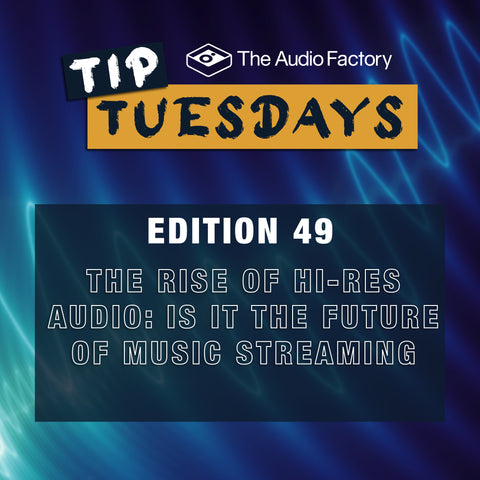As streaming platforms grow and listening habits evolve, high-resolution audio (often shortened to hi-res) has moved from audiophile niche to mainstream buzzword. With promises of studio-quality sound, increased bitrates, and richer detail, hi-res audio aims to deliver a listening experience that brings you closer to the original performance. But does it really make a difference, and is it the future of how we listen?
What Is Hi-Res Audio?
Hi-res audio refers to digital music that exceeds the quality of standard CD audio (16-bit/44.1kHz). Most hi-res files range from 24-bit/48kHz up to 192kHz, offering greater dynamic range, more sonic detail, and a closer representation of analog recordings.
Services like TIDAL, Qobuz, Amazon Music HD, and Apple Music have embraced hi-res formats, while manufacturers of hi-fi gear (from streamers to DACs) are designing products that can handle these formats natively.
Why It Matters (And When It Doesn’t)
In the right setup, hi-res files can sound stunning. Revealing textures, reverb, and spatial cues that are lost in compressed formats. However, the difference isn’t always dramatic, especially if you’re listening over basic earbuds or Bluetooth speakers. Room acoustics, speaker quality, and even hearing sensitivity play a role. Hi-res shines most when paired with capable equipment and an attentive listener.
What You Need to Hear the Difference
Not all gear is created equal. To get the most out of hi-res streaming, you’ll need a compatible streamer or DAC (like the Bluesound NODE or NAD C 700), a reliable internet connection, and high-quality speakers or headphones. Wired connections often preserve more fidelity than Bluetooth, unless you're using high-quality codecs like aptX HD or LDAC. And make sure your streaming service is actually delivering files in true hi-res. Some “HD” tiers only match CD quality.
Convenience vs. Fidelity
The biggest challenge to widespread hi-res adoption is balancing convenience with performance. For many listeners, Spotify’s ease and massive catalog outweigh the benefits of higher audio fidelity. But for music lovers who crave immersive, detail-rich listening sessions, hi-res offers a compelling upgrade, especially as data speeds, storage, and hardware continue to improve.
Looking Ahead
As more people invest in better audio gear and platforms expand their hi-res libraries, the shift toward higher-quality streaming feels inevitable. Lossless audio might not replace compressed formats overnight, but it’s no longer reserved for a select few. With the right setup and curiosity to explore, hi-res audio can deepen your appreciation of music, one subtle nuance at a time.
Thanks for checking out this edition of Tip Tuesday! Stay tuned for next week’s insight, and until then, happy listening.







Comments (0)
There are no comments for this article. Be the first one to leave a message!